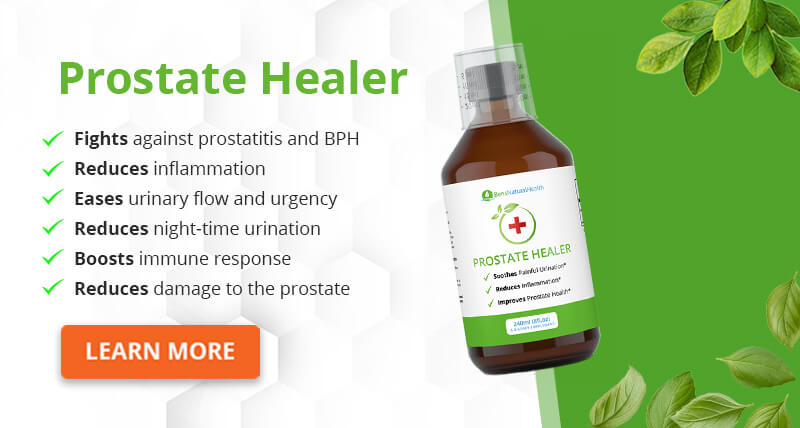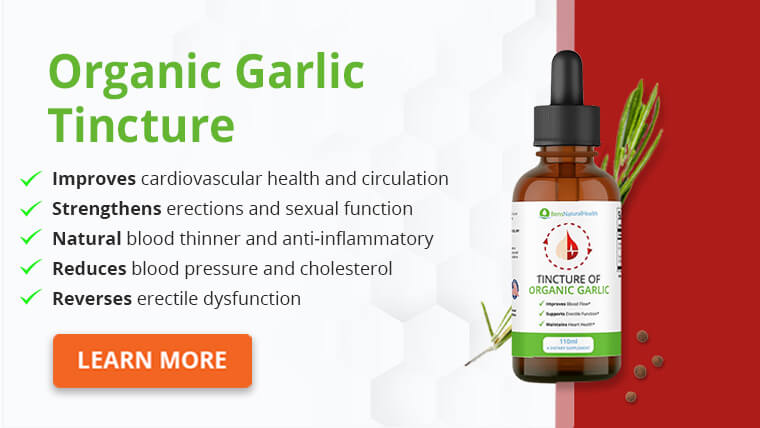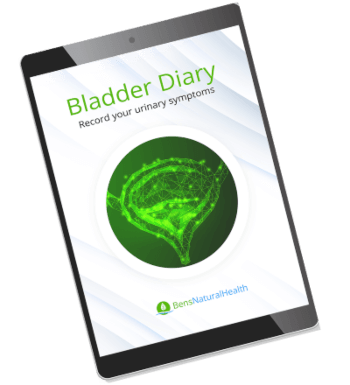Escherichia coli, also called E coli, is one of the most famous bacteria of all.
Even people who know little about science and medicine have heard of it.
But what is E. coli, and what symptoms can it cause?
These questions, among other things, will be answered in this article.
After reading, you will also understand when it is appropriate to consult a doctor, some medical treatments, as well as home remedies you can use.
What is E. coli?
E. coli is the name of a bacterium that is found in commensal intestinal flora. This means the bacteria can be found in our intestines without causing harm.
However, there are also variants of the same bacteria that are more aggressive and can cause different symptoms.
It is a gram-negative bacterium, and in addition to being found in the intestines, we can also see it in vegetables, undercooked meat, unpasteurized products, and contact with the soil.
Among the intestinal pathogenic variants, we find:
- Enterotoxigenic E coli, or ETEC, which is the leading cause of traveler’s diarrhea.
- Enterohemorrhagic E coli, or EHEC, which, as its name suggests, causes a type of bloody diarrhea. E coli O157:H7 enters this category and can also trigger kidney failure.
- Enteroinvasive E coli, or EIEC, which is among the least common.
- Enteropathogenic E coli, or EPEC, which mainly affects young children and infants.
- Enteroaggregative E coli, or EAEC, which is the second most common cause of traveler’s diarrhea.
- Shiga toxin-producing E coli, or STEC, is responsible for more severe symptoms, including watery diarrhea and large outbreak episodes from contaminated produce. These strains can also produce hemolytic uremic syndrome as a complication in 24% of patients.
However, as we will see in this article, E coli not only causes diarrhea and gastrointestinal problems.
It can also affect the urinary tract, the respiratory tract, and the brain with meningitis. These are mainly uropathogenic and meningitis E coli-specific strains.
Get your FREE bladder diary
- Daily bladder diary
- Better understand your urinary symptoms
- Step-by-step guide
Symptoms of E. coli
As mentioned above, E. coli can cause mainly gastrointestinal and urinary symptoms. It is also responsible for some cases of pneumonia, especially in mechanically ventilated patients.
So, what are the symptoms of E coli? Let us look separately at the main symptoms of E-coli in intestinal, but mainly urinary infections.
In intestinal infections, E coli infection can cause symptoms like:
- Abdominal cramps
- Watery diarrhea
- Bloody diarrhea
- Diarrhea associated with recent travel (traveler’s diarrhea)
- Dehydration
In urinary tract infections, Escherichia coli can cause symptoms such as:
- Urinary urgency, defined as an inescapable urge to urinate
- Burning sensation or pain when urinating, which only occurs during voiding
- Decreased urine volume upon micturition, as the urinary tract is unable to distend and hold as much urine as it should
- Increased urinary frequency, which is caused by irritation of the bladder.
- Strong or foul-smelling urine, as these bacteria produce foul-smelling substances.
- Changes in urine coloration, which may be pink, red, or off-white. Colors may be caused by blood or pus.
- Pain in the pelvis, lower back, or flanks due to the inflammatory process occurring in the bladder or kidneys.
- Fever and chills, as the inflammatory response due to the infection, send a signal through inflammatory sites, which reaches the brain and increases body temperature.
- Nausea, which can sometimes trigger vomiting.
- A sensation of pressure or discomfort in the pelvis, also due to the inflammatory process in the urinary bladder.
How long do E. coli symptoms last?
E. coli infection can sometimes be very severe. Although it is a commensal microorganism found in many people’s gut flora, some strains are very aggressive.
If the problem is not treated with antibiotics, the infection can progress and spread, leading to sepsis.
For this reason, prompt medical treatment is recommended, following your doctor’s advice.
After starting antibiotic treatment, the infection usually clears up within a week. Some more aggressive strains may require more extensive treatment, which also depends on the patient’s immune system.
Causes and risk factors
As mentioned above, E coli is an organism generally found in the intestinal flora. However, there are aggressive strains that can cause intestinal diseases.
These can be found in contaminated food, contaminated water, and the feces of infected people, triggering E coli food poisoning symptoms.
Therefore, the risk factors for intestinal infection are:
- unsanitary conditions
- incorrect food handling
- drinking unsafe water
- traveling to endemic countries and areas
In the case of E coli urinary tract infections, the leading cause is the migration of bacteria from the intestine to the urinary tract. The most common way is through direct contact, for example, due to improper wiping technique after a bowel movement.
Thus, urinary tract infections are more common in women than men. Women have a shorter urethral duct, so bacteria do not have to travel as far to reach the bladder and colonize the mucosa.
Sexual contact can also be a route of entry to a urinary tract infection, especially in a woman. This is because the urinary meatus is very close to the vagina and anus.
Similarly, holding urine for a long time can cause E. coli urinary tract infection. This is because, by continuously urinating, the body sweeps out the bacteria contained in the urethra.
By decreasing urinary frequency or holding urine for a long time, you are shutting down this defense mechanism.
Some risk factors for E coli urinary tract infections are:
- Menopause: because estrogen has been shown to be a protective factor against urinary tract infections.
- Diabetes: because increased blood sugar is also reflected in the urine. In addition, people with diabetes often have immune problems.
- Contraceptives such as diaphragms and condoms with spermicide. The latter can also destroy the normal flora that protects us from infections.
- Pregnancy, especially between 6 and 24 weeks, due to hormonal changes that facilitate the passage of E coli to the urinary tissue. In addition, as the uterus grows, it puts pressure on the bladder, decreasing its storage capacity.
- Prostate enlargement, which decreases the flow of urine and does not allow complete bladder emptying.
- Kidney stones, which besides blocking the flow of urine, also cause damage to the mucosa of the urinary tract and make it susceptible to infections.

When to see a doctor about E. coli symptoms
It is crucial to contact your healthcare provider if you experience the following E coli infection symptoms:
- Diarrhea lasting more than three days
- Diarrhea with a high fever
- Bloody diarrhea
- Continuous vomiting
- Signs of dehydration
- Symptoms of E coli urinary tract infection, such as burning with urination and pelvic pain
Note that urinary symptoms should be evaluated promptly in men and women. They are sometimes due to vaginal infections in women, prostatitis, or prostate enlargement in men.
However, it is essential to rule out other causes and treat infections if present. Symptoms of E coli in adults can be the same as in children and infants. Still, the means to detect them differ significantly.
Treatments
E. coli is a bacterium; the only way to treat it is through antibiotics. Antibiotics are mainly recommended in cases of E coli-related urinary tract infection. Azithromycin, Rifaximin, and ciprofloxacin can be used to treat the infection.
A physician must prescribe these antibiotics, as their use will depend on the severity of the case and the prevalence of antibiotic resistance in the area where you live.
For example, a recent study showed an alarming rate of resistance against trimethoprim sulphamethoxazole of 25%.
In another study, the same antibiotic gave a 50% chance of resistance, as shown in the following table:
| Antibiotic | Chance of resistance |
| Tetracycline | 94% |
| Trimethoprim/Sulfamethoxazole | 50% |
| Cefuroxime | 50% |
| Amoxicillin and piperacillin | 33% |
| Ceftriaxone and cefoxitin | 27% |
| Ciprofloxacin, levofloxacin, Augmentin | 22% |
| Gentamicin | 16% |
| Ceftazidime | 11% |
| Cefotaxime | 5% |
| Meropenem | 0% |
Therefore, only use antibiotics that your physician has prescribed. Antiseptic agents, such as nitrofurantoin, may also be prescribed in addition to antibiotic therapy.
In some cases, treating E coli infections does not include antibiotics, especially in intestinal diseases.
When the main symptoms are diarrhea and dehydration, treatment should consist mainly of rehydration and drugs such as bismuth salicylate.
Home remedies for E. coli
Among the main recommendations for a gastrointestinal E coli infection, we have:
- Maintain good hydration, especially during diarrhea.
- Drink small amounts of fluids to avoid nausea and vomiting.
- Getting enough rest and staying in bed for the maximum amount of time.
- Avoid antidiarrheal medications when not directly prescribed, as they are not recommended in some cases of E. coli infection.
- Avoid the consumption of fatty foods, alcohol, and caffeine.
On the other hand, when E coli causes urinary tract infections, home remedies are very similar to other urinary tract infections. We also recommend:
- Maintain good hydration to promote frequent sweeping of the urinary system.
- Avoid beverages and foods that irritate the bladder, such as alcohol, caffeine, spicy foods, and dairy products.
- Taking probiotics to promote the growth of normal flora in the urinary tract.
- Use natural antibiotics, such as garlic, honey, ginger, oregano, cloves, and apple cider vinegar.

Prevention
There are several ways to prevent E. coli infection. Continuous hand washing is recommended, especially after passing stool and when cooking.
Thorough cooking of meat is essential, as well as rinsing of fruits and vegetables. Purified water consumption is vital, and special care should be taken with immunosuppressed patients.
To avoid diarrheal diseases, the International Society of Travel Medicine, ISTM, recommends the prophylactic use of some antibiotics. You can talk to your doctor about this if a trip to a diarrhea-endemic area is on the horizon.
On the other hand, for the prevention of E coli urinary tract infections, hygiene with abundant soap and water is the most fundamental step.
Proper washing of the genitals and a proper wiping technique can help reduce the risk of this condition.
If the risk is due to contraceptive use, you can discuss a change with your healthcare provider.
Similarly, in medical settings, the risk of urinary tract infections is reduced by reducing the use of catheters, which can be contaminated with this and other bacteria.
Conclusion
E. coli is a very common bacterium in the human body. It is found in the gastrointestinal tract as a commensal organism. However, more aggressive variants of E coli can cause intestinal disease.
Likewise, even the less aggressive variants can migrate to other tissues causing infection. Most commonly, it occurs in the urinary tract, where they usually pass through direct contact.
This is especially true in women because the urinary meatus is very close to the vagina and anus and because they have a shorter urethra than men.
E coli infections can cause symptoms depending on the organ affected. For example, the main symptom of E. coli urinary tract infections is burning or pain when urinating. They can also cause fever, nausea and vomiting, pelvic pain, lower back pain, and changes in the appearance and odor of urine.
E. coli urinary tract infections require antibiotic treatment to resolve. In contrast, intestinal infections mainly resolve with the patient’s hydration with diarrhea, and sometimes antidiarrheal agents may be used depending on the strain involved. In any case, a health professional should guide all medical treatment.
Explore More








